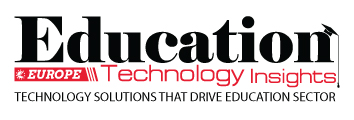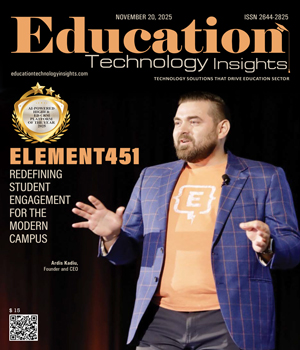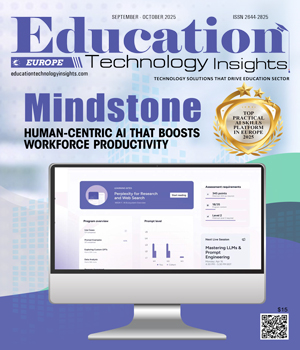THANK YOU FOR SUBSCRIBING
Be first to read the latest tech news, Industry Leader's Insights, and CIO interviews of medium and large enterprises exclusively from Education Technology Insights
Managing the three dimensions of education as an operational business
Stuart McDowall DipM MCIM CMktr, FIKE, Head of Innovation and STEM, City of Glasgow College
 Stuart McDowall DipM MCIM CMktr, FIKE, Head of Innovation and STEM, City of Glasgow College
Stuart McDowall DipM MCIM CMktr, FIKE, Head of Innovation and STEM, City of Glasgow CollegeStuart leads the implementation of the College’s ambitious innovation agenda and its commitment to enhancing STEM provision. An experienced Chartered Marketer with 15 years of experience in education, Stuart is responsible for driving innovation at the City of Glasgow College and is committed to developing innovative systems and approaches that transform the delivery and management of tertiary education.
If Digital transformation could be defined as “anything from IT modernization (for example, cloud computing), to digital optimization and the invention of new digital business models", how do colleges manage the three dimensions of education as an operational business: the institution itself, students, and staff?
Technology is undoubtedly changing the face of everything! However, will tech like Artificial Intelligence (AI) help or hinder education? AI offers the chance to take personalized learning to the next level, catering more widely to a variety of needs. In saying that, can machines manage the desired relationships needed in the learning process? More broadly and outside the classroom, technologies can create a seamless experience from enrolment through to graduation. So what importance should be placed on creating transformation plans for education and training institutions?
To foster high-performing digital education ecosystems, transformation needs to take place inside and outside the classroom (whether virtual or physical). This is achieved through a coherent strategy implemented through collaboration, coordination, and creativity. Furthermore, the continuous professional development of staff is increasingly important to deploy digital platforms and technologies and deliver institutional transformation.
Digital disruption won’t disappear, if anything disruptions will increase, and more rapidly, as the number of new and emerging technologies require colleges to galvanize a culture that encourages collaboration, experimentation, and innovation. In addition, with resources becoming stretched, how do we optimize these technologies to focus on improving the experiences of our students, staff, and stakeholders through the better alignment of digital infrastructure, platforms, and capabilities?
“To implement a systematic and robust approach to digital transformation, institutions can apply a transferable set of criteria to shape future developments in their strategies, workforce planning, and investments in digital infrastructure.”
What we do know is that colleges require support in adapting to these new ways of digital working. This may require adaptations and/or enhancements to their digital strategy, digital culture, and digital resources and infrastructure. A good starting point is to assist colleges to assess their current approach to deploying digital technologies and their digital maturity. This provides a framework to plan the journey they need to embark on to accelerate the pace of digital transformation within their institution. To implement a systematic and robust approach to digital transformation, institutions can apply a transferable set of criteria to shape future developments in their strategies, workforce planning, and investments in digital infrastructure.
The City of Glasgow College is leading a European acceleration in digital transformation across the tertiary sector. To understand where to begin a digital transformation journey, the Assessing Digital Maturity in Colleges (ADMiC) project provides the opportunity to increase an institution’s capacity to optimize digital technologies and platforms and enhance its digital maturity.
Colleges are operating within increasingly complex and uncertain environments and the landscape has changed forever since the pandemic. The commitment to deliver high-quality, inclusive education through virtual means requires tangible support for learners, teachers, and trainers and involves the entire enterprise architecture to change, not only to significantly improve internal processes but to also enhance how the institution interacts with students, staff, and stakeholders using technology.
Read Also
Goldilocks Regulation
Beyond the Quiz: Redefining Competence in eLearning
Beyond Theory and Into Monday Morning: Enhancing Graduate Programs for Teachers
Safeguarding Students in the Age of Deepfakes: An Educational Imperative
Delivering Excellence in Education through Transformative School Leadership
Curriculum Innovation for Student Success and Institutional Growth

I agree We use cookies on this website to enhance your user experience. By clicking any link on this page you are giving your consent for us to set cookies. More info






















